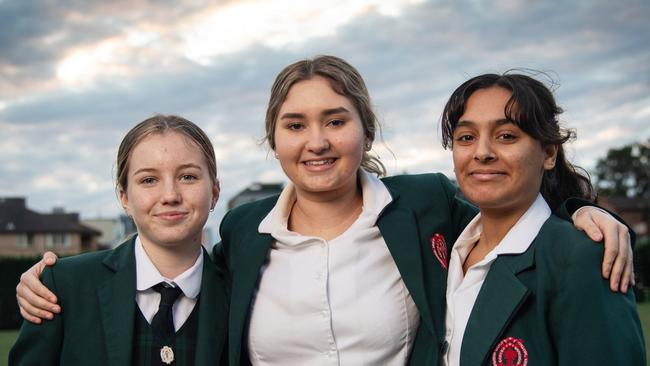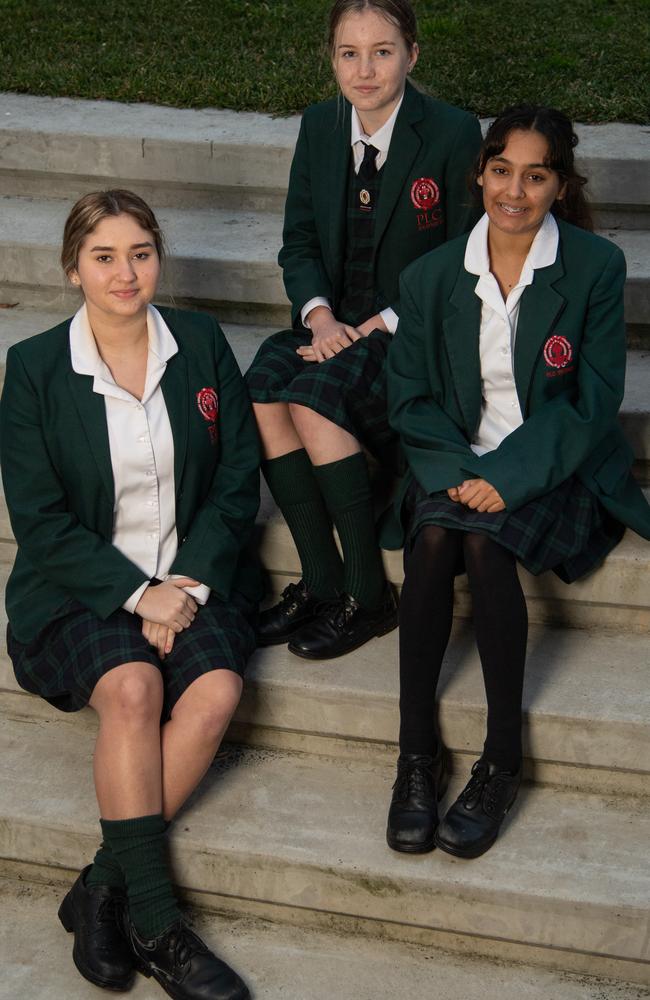Aboriginal languages gaining popularity in schools
More children are now studying Aboriginal languages in primary school as educators abandon traditional European languages such as French and Italian. And experts say it could be a good move.
Education
Don't miss out on the headlines from Education. Followed categories will be added to My News.
- Fire at exclusive western Sydney school
- Four Sydney schools closed as cases rise
- Sydney primary school oval riddled with asbestos
More children are now studying Aboriginal languages in primary school as educators abandon French and Italian.
Experts say learning an Indigenous language has increasing meaning for many students while knowledge of another tongue can improve grammar, spelling and punctuation.

The number of students studying the central NSW Aboriginal language of Wiradjuri in government schools more than doubled from 1255 in 2012 to 3317 last year, according to Education Department data.
Numbers studying the northern NSW Indigenous language Bundjalung jumped from 238 in 2012 to 1986 last year.
Meanwhile Italian learners fell from 14,165 to 9521 and French from 7445 to 5128 over the same period.
The total number of students studying a language in primary school declined from 18 per cent of students in 2012 to 16 per cent last year.
Last year fewer Year 7 students reached the minimum standard for NAPLAN in reading, writing, grammar and punctuation compared with a decade ago.
MORE NEWS
20-year Pyrmont revamp will clear way for Ritz-Carlton tower
Tax cheat: ‘I ripped off families struggling amid COVID’
Monash University language learning expert Dr Ruth Fielding said her research released earlier this year showed primary school students who studied another language in depth were able to significantly improve their NAPLAN results in English.
“The takeaway message (we took) from that is that you can add an additional language to students’ learning and they will do even better in the external measures of English,” she said.
She endorsed the shift to study Aboriginal languages because students would be more engaged because it was relevant to their local community.
“It does make sense in the Australian context to include Aboriginal languages, particularly if there isn’t another community language which is really strong,“ she said.
“If that is a local language that is relevant to the local community it has some meaning for students.”
NSW Modern Language Teachers Association executive Fiona Boughey said in some cases significant swathes of Indigenous languages had been lost but said students could still benefit from learning about local Aboriginal culture.
“With Aboriginal language, depending on which language there is not always a lot of language to learn — there is a lot of culture, which is really rich and important,” she said.
“Throughout colonisation … it has basically been wiped out so it is basically a retrieval of language.”
She said traditional French and Italian had declined because schools struggled to find qualified educators.

The Department of Education data shows Mandarin has remained the most popular language over the past eight years with 20,267 primary school students studying it last year.
Presbyterian Ladies College principal Dr Paul Burgis said the school appointed an Indigenous co-ordinator 10 years ago to help support Aboriginal students and encourage cultural engagement among staff and students.
“They support the girls in their academic work so they have somebody they can go to because their learning needs might be a little bit different,” he said.
The school has an Indigenous scholarship program, runs immersion activities for students in Aboriginal communities and invites Indigenous leaders into the school to work with staff.
Year 12 student Stephanie Pholi, 17, said they studied indigenous perspectives in schools while the Indigenous co-ordinator provided her with opportunities to speak to educate the school community about Aboriginal culture.
“In Reconciliation Week I wrote a speech just about family and culture and touched on a whole bunch of things like systemic racism and intergenerational trauma,” she said.
